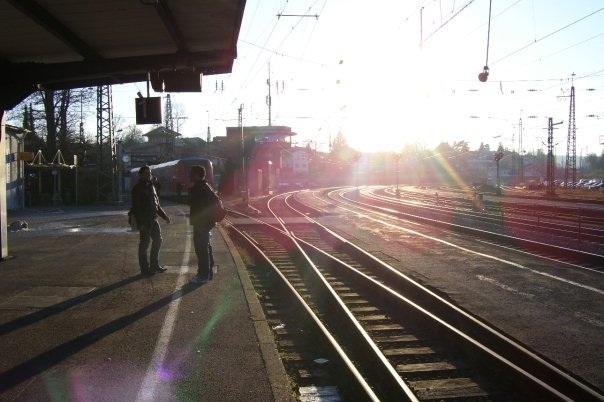
Uploaded on 2014-11-26 by Adriaan2
[1]: https://edxuploads.s3.amazonaws.com/1417039235646374.jpg This image depicts people waiting for a train in a small town in Bavaria, Germany. Industrialised countries have large portions of their population depending predominantly on public infrastructure such as rail for transport. This predominance of rail in the urban transportation supply results in less need for wide roads or demolition of old, protruding structures to make way for automobiles in the inner city business district. Compare this with many urban areas in the new world, such as southern America or sub-Saharan Africa, and you quickly find a clear link between the developmental phase coinciding with the era of the automobile and large urban sprawl and suburbia, often with wide, bustling roads in the middle of the central business district with dangerous and unhealthy conditions for pedestrians. This creates a feedback loop that pushes more people into cars and enclosed parking areas and off the high street, putting downward pressure on the demand for pedestrian facilities and business establishments in the CBD.